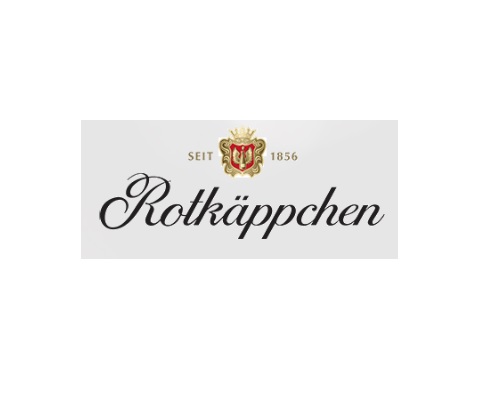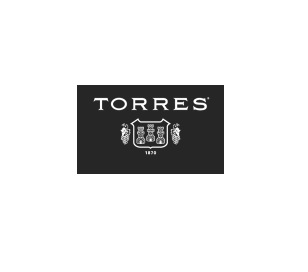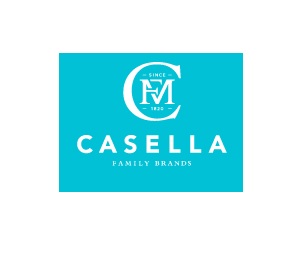ALCOHOLIC BEVERAGES
Reduced alcohol, full flavour
Leading wine, beer and spirit companies around the world use Flavourtech’s technologies for a range of purposes, including:
- Dealcoholisation, to service a growing market for low-alcohol and no-alcohol wines
- Alcohol adjustment to improve the quality of full strength wines
- Dealcoholisation of beer
- Grape juice concentration
- Alcohol recovery from yeast in wine, beer and cider
- Malt extract concentration
- Sulphur removal from grape juice
APPLICATIONS
Dealcoholisation
 The market demand for low or no-alcohol content beverages is continuing to increase in many countries around the world. This demand is driven by a number of factors including health concerns, stricter drink-driving laws and religious or cultural attitudes.
The market demand for low or no-alcohol content beverages is continuing to increase in many countries around the world. This demand is driven by a number of factors including health concerns, stricter drink-driving laws and religious or cultural attitudes.
Flavourtech’s Spinning Cone Column (SCC) and Resin Adsorbing Column (RAC) technologies assist winemakers and beverage manufacturers to produce better tasting low- and no-alcohol wine, beer, cider and spirits. The SCC has been designed to reduce thermal impact by operating at low temperatures and with a product residence time of only 25 seconds. This ensures that the quality of the de-alcoholised wine, beer, cider or spirit is not damaged in any way.
The SCC and RAC are enabling more and more people to drink low-alcohol and no-alcohol products. The reason? They taste like they were meant to! The flavours and aromas have been preserved which means the only thing you are missing out on is the alcohol.
Alcohol adjustment of wine
 Flavourtech’s SCC can also be used to make slight alcohol reductions to full strength wines. By reducing the concentration of alcohol relative to that of flavour and aroma components the quality of the wine can be improved, allowing winemakers to harvest fruit according to flavour requirements rather than sugar levels.
Flavourtech’s SCC can also be used to make slight alcohol reductions to full strength wines. By reducing the concentration of alcohol relative to that of flavour and aroma components the quality of the wine can be improved, allowing winemakers to harvest fruit according to flavour requirements rather than sugar levels.
Around 600 winemakers on the west coast of the USA are using Flavourtech’s SCC technology for alcohol reduction. These wineries have found that even a slight reduction of alcohol can lead to improved flavour complexity. The SCC is also used to reduce alcohol in wine in other countries around the world including Australia, South Africa, Chile, Spain and Germany.
How it works
Reducing the alcohol content in wine is accomplished using a two-pass process:
- A portion of the wine is separated from the bulk wine and processed through the SCC in two steps. The first pass is processed at approximately 30°C to capture the delicate volatile aroma compounds of the wine. The aroma-stripped wine is then passed again through the SCC at approximately 40°C to remove the bulk of the alcohol.
- The de-alcoholised wine and the aroma fraction are then blended with the untreated portion of the batch to give a finished product at the desired ethanol content.
Other methods of alcohol reduction, such as evaporation or filtration, cause the loss of many vital flavour compounds and require a far greater volume of wine to be processed. The SCC ensures that none of the delicate flavour is lost but is returned wholly intact to the wine. View the comparison of Flavourtech’s Spinning Cone Column and Reverse Osmosis.
Dealcoholisation of Beer
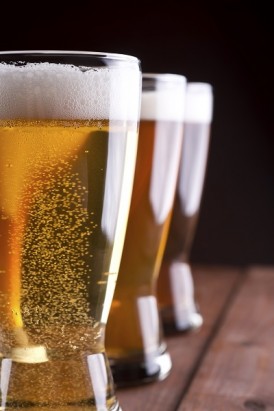 Brewers have been using Flavourtech’s SCC technology for a number of years to improve the taste quality of low-alcohol beer products.
Brewers have been using Flavourtech’s SCC technology for a number of years to improve the taste quality of low-alcohol beer products.
How it works
- For low-alcohol beer (<0.5%abv) and light-alcohol beer (0.5% to 2.5%abv) the SCC system is supplied with two columns operating in series. The first column is used for recovery of aroma, while the second column is used to remove alcohol. Returning the aroma fraction recovered from the first stage back to the de-alcoholised beer imparts the full flavour of the starting material back to the finished low-alcohol beer. The same two-stage SCC system can be used to produce a range of low-alcohol and light-alcohol beers with flavour added back by simply blending the de-alcoholised beer with full strength beer.
- For non-alcoholic beer (<0.05%abv) the SCC is again used to separate aroma from the beer prior to alcohol removal. However, because the recovered flavour is still alcoholic, this fraction cannot be used directly in the production of beverages at <0.05%abv. To recover the aroma compounds contained within this fraction, Flavourtech has developed the Resin Adsorbing Column (RAC). The RAC has at its core, the principles of adsorption and desorption and can be positioned downstream of the SCC when producing zero alcohol beer. The technology effectively ‘traps’ aroma compounds within the alcoholic flavour condensate recovered by the SCC and ‘releases’ them as a non-alcoholic aqueous solution. This solution can then be added back to a de-alcoholised base creating a flavoursome zero alcohol beer without the need to add external flavours.
The SCC can also be used to process beer containing yeast (such as wheat beer), unfiltered beer or green beer.
Grape juice concentration
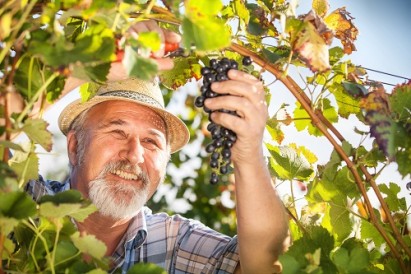 Many wineries produce concentrated grape juice in order to reduce transportation and storage costs, for product sweetening, or to increase the total sugar level in the grape juice prior to fermentation.
Many wineries produce concentrated grape juice in order to reduce transportation and storage costs, for product sweetening, or to increase the total sugar level in the grape juice prior to fermentation.
Flavourtech’s Centritherm® evaporator is used for concentration of grape juice up to 68°Brix with only a one second contact time on the heating surface and typical evaporation temperatures of just 50°C. This quick evaporation step ensures that the concentrate has no cooked or “jammy” notes that may result with other evaporators that use higher temperatures and longer residence times. Preservative free grape juice concentrate may be produced using the Centritherm evaporator by concentrating the juice to sugar levels above which fermentation will not occur. Many of Australia’s largest wineries are benefiting through the use of the Centritherm evaporator for grape juice concentration.
Alcohol recovery from yeast
 Alcohol manufacturers are using Flavourtech’s clever engineering and gentle processing of the continuous Spinning Cone Column to recover alcohol directly from yeast broth or slurry.
Alcohol manufacturers are using Flavourtech’s clever engineering and gentle processing of the continuous Spinning Cone Column to recover alcohol directly from yeast broth or slurry.
Spent yeast from alcoholic fermentations found in wine, beer, cider, and spirits contains a significant alcohol content. With today’s focus on cost management and eco-conscious manufacturing, many companies are looking at maximising the alcohol returns from the fermentation process.
How it works
- Beer or wine yeast with a dry matter content of up to 15% can easily be processed through the SCC system in a single continuous pass in order to recover more than 90% of the alcohol present in the feed stream. The strength of the alcoholic condensate will largely depend on the strength of the feed material. As an example, for a feed of brewer’s yeast at 7.5%abv, a condensate strength of 45%abv would be typical. For wine yeast (lees) at 14%abv alcoholic condensate would be collected at 60%abv.
- Apart from significantly reducing effluent problems associated with residual alcohol, the alcoholic condensate can be used as an ingredient in other alcoholic beverage formulations or sold as a by-product.
- Bio-ethanol produced from yeast fermentation can be obtained directly from fermentation broth using the SCC. This removes the necessity to separate yeast from the liquid as would normally be required when using conventional continuous stripping technology.
Malt extract concentration
 Liquid malt extracts used in malted beverages, home brewing, bread making and cereal production are produced by the aqueous extraction of sugars from malted barley and subsequent concentration into a viscous syrup.
Liquid malt extracts used in malted beverages, home brewing, bread making and cereal production are produced by the aqueous extraction of sugars from malted barley and subsequent concentration into a viscous syrup.
Concentration of malt extract
Flavourtech’s Centritherm® evaporator is an excellent choice for the concentration of malt extract due to its ability to process highly viscous concentrates (>80°Brix in the case of malt extract) while preserving the product’s characteristics and functionality. For example, the extremely low thermal impact of the Centritherm evaporator can be critical when producing diastatic malt extracts where the naturally occurring enzymes in the original malt must be preserved
The Centritherm evaporator can also be used in non-diastatic malt extracts where the malt is generally providing a valuable source of fermentable sugars, malty flavour and natural colour. As a result of the minimal contact time and low evaporation temperatures (45-50°C), the Centritherm evaporator can concentrate malt extracts without imparting unwanted cooked or burnt notes. This is unlike conventional evaporators where residence time on the heated evaporation surface is much longer and evaporation temperatures are higher.
Benefits of the Centritherm evaporator for the concentration of malt extracts include:
- Capable of processing more viscous liquids than conventional evaporators
- No damage to natural colour
- Low hold-up volume makes it ideal for concentrating small batches
Aroma recovery using Flavourtech’s Spinning Cone Column
Where the aroma of a malt extract is a critical component for a given application, the combination of Spinning Cone Column technology and Centritherm® evaporator provides the very highest quality possible. The SCC can recover important volatile compounds directly from the malt extract as a concentrated aqueous aroma prior to concentration. This aqueous stream is then added back to the concentrated malt extract after evaporation.
Sulphur removal from grape juice
 For many wineries and grape juice processors the grape harvest exceeds available fermentation or evaporation capacity. The temporary excess of single strength juice needs to be stored either chilled or at ambient temperature as single strength sulphited juice.
For many wineries and grape juice processors the grape harvest exceeds available fermentation or evaporation capacity. The temporary excess of single strength juice needs to be stored either chilled or at ambient temperature as single strength sulphited juice.
Chilled storage for prolonged periods is extremely expensive while the potential disadvantage of storing sulphited juice is that before further use the sulphur must be removed. Conventional techniques for desulphiting can result in unnecessary thermal damage.
Flavourtech’s Spinning Cone Column technology is a low-energy, cost-effective solution that avoids this problem, as its extremely short residence time and low temperatures minimise thermal degradation of the juice.
Further, the cleanability of the SCC prevents undesirable characters being transferred to the juice as a result of inadequate cleaning that is common in some conventional desulphiting systems. The SCC can also be used to recover aroma from the grape juice prior to sulphiting. This aroma can be stored separately, under optimum conditions, and added back to the juice after desulphiting.
Additional innovations for the wine industry
In addition to manufacturing and providing individual pieces of equipment and complete process lines, Flavourtech can also design and build technologies to meet specific requests or applications. A recent example of this was the introduction of a Flavourtech dosing system for accurate in-line blending of various processing aids, components and additives for the wine industry. To read more about this system click here.


